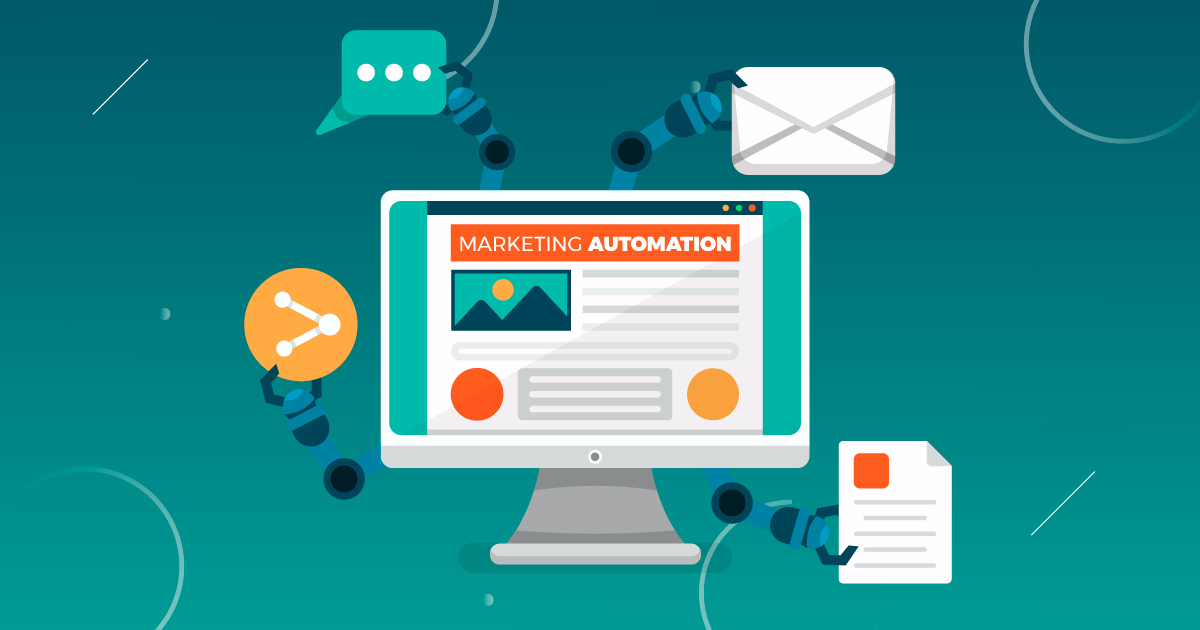
So, you’re brand new to marketing automation (MA) and want to learn the ropes? You’re in luck because that’s what we do all day here at MAC!
Our team wrote this blog post to share our world with you and teach you the basics of marketing automation so you can make informed decisions for your organization.
In this guide, we will cover:
- What is Marketing Automation?
- A glossary of key terms you should know
- Examples of top marketing automation platforms
- The benefits of integrating MA and CRM systems
- Traditional marketing tactics vs. marketing automation
- Key MA tools and features that are important for modern organizations
What Is Marketing Automation?
In simplest terms, marketing automation is the use of software to automate repetitive marketing tasks and streamline workflows. It’s designed to boost the efficiency and effectiveness of your marketing efforts.
By investing in MA, businesses can create consistent, personalized experiences for their prospects and customers. Through automation, organizations can manage leads more effectively and ultimately drive revenue growth.
This technology integrates seamlessly with customer relationship management (CRM) systems like Salesforce, allowing for smoother transitions between marketing and sales.
Now, you may be asking, “What’s a CRM?”
Let’s take a closer look at that term along with several others you should know.
Marketing Automation Glossary
- Marketing Automation (MA): Software that automates marketing tasks and workflows.
- CRM (Customer Relationship Management): A system for managing interactions with current and potential customers.
- Lead Nurturing: Building relationships with prospects at every stage of the sales funnel through automated, personalized communication.
- Segmentation: Dividing a customer base into smaller groups based on specific criteria for targeted marketing.
- Personalization: Tailoring marketing content to individual prospects based on their preferences and behavior.
- Workflows: Automated sequences of actions triggered by specific events or behaviors.
- Lead Scoring: Assigning value to leads based on their behavior and engagement levels.
- A/B Testing: Comparing two versions of a marketing asset to determine which performs better.
- Dynamic Content: Web or email content that changes based on the viewer’s characteristics or behavior.
- Drip Campaign: A series of automated emails sent over time to nurture leads.
Examples of Top Marketing Automation Platforms
- Marketo Engage: Owned by Adobe, this platform is known for its advanced data collection and segmentation capabilities.
- HubSpot: An all-in-one platform designed to help businesses grow by streamlining their marketing, sales, and service processes.
- Salesforce Marketing Cloud: A comprehensive solution that focuses on creating personalized customer journeys.
- Pardot: Created by Salesforce, it’s designed for B2B marketers looking to generate and nurture leads.
Why is It Important to Integrate MA and CRM Systems?
These two types of platforms serve their own purposes, but the real magic happens when you seamlessly integrate them. Here are some of the benefits you can expect:
- Seamless Sales Handoff: The most critical part of the buyer journey is connecting the lead with a Sales rep at the right time.
- Optimized Buyer Journey: Share digital engagement data with sales team, and Opportunity data with Marketing team to automate personalized communications.
- Enhanced Personalization: Deliver customized content based on user behavior and preferences.
- Improved Lead Management: Automated workflows will initiate timely follow-ups and maintain consistent communication with leads.
- Data-Driven Insights: Analyze data to refine marketing strategies and improve campaign effectiveness.
- Resource Optimization: Reduce manual tasks and allow your marketing teams to focus on strategic initiatives.
- Increased ROI: Higher conversion rates and more efficient marketing spend lead to better overall returns.
What’s the Difference Between Traditional Marketing Tactics and Marketing Automation?
Traditional marketing tactics often rely on broad, impersonal email blasts to large databases. This approach may have worked 10 years ago, but we’re in 2024 now. People are tired of receiving mass-produced, impersonal communications from brands.
If your approach to marketing is too general, you might end up wasting your time and resources. This is where investing in an MA tool may come in handy.
Why Marketing Automation Can Be More Effective
- Higher Engagement: Personalized emails and content are more likely to be opened and engaged with.
- Better Efficiency: Automated workflows save time and reduce manual efforts.
- Improved ROI: Data-driven strategies and targeted marketing result in higher conversion rates.
Key MA Tools and Features That Are Important for Modern Organizations
If you want to stay competitive in 2024 and beyond, there are certain features of MA platforms you should pay close attention to. Here are a few examples:
Email Marketing Automation
This feature allows you to send automated, personalized emails to your audience based on their behavior, preferences, and interactions with your brand. Many platforms will give you the opportunity to:
- Segment Audiences: Divide your email list into smaller, targeted groups based on various criteria such as demographics, purchase history, or engagement levels.
- Personalize Content: Use dynamic fields to insert personalized details (such as the recipient’s name or recent purchases) into your emails, making them more relevant and engaging.
- Automate Workflows: Set up automated email sequences (a.k.a. drip campaigns) that trigger based on specific actions. (Ex. A welcome series for new subscribers or re-engagement emails for inactive customers)
- Track Performance: Monitor email open rates, click-through rates, and conversion rates to assess the effectiveness of your campaigns and make data-driven adjustments.
Lead Management
“Too many leads” is a great problem to have… until you don’t know which ones to prioritize. Effective lead management is crucial for nurturing leads throughout the sales funnel and converting prospects into customers.
Look for these features:
- Lead Scoring: Assign scores to leads based on their behavior—such as website visits, email opens, or content downloads—and demographic information. This helps prioritize leads that are more likely to convert.
- Integration with CRM: Sync lead data with your CRM system to ensure seamless handoff to sales teams and maintain a unified view of each lead’s journey.
CRM Integration
Integrating your marketing automation platform with a CRM system like Salesforce provides a holistic view of your customer interactions. These features will enhance collaboration between marketing and sales teams:
- Unified Data: Maintain a single source of truth for customer data, ensuring all teams have access to the same information.
- Lead Tracking: Automatically capture and track lead interactions across marketing and sales touchpoints, providing a complete view of the customer journey.
- Sales Enablement: Equip sales teams with detailed insights into lead behavior and engagement, enabling them to tailor their approach and close deals more effectively.
Dynamic Content
Dynamic content involves creating marketing materials that change based on the viewer’s characteristics or behavior, delivering a more personalized experience.
Look for these advanced dynamic content capabilities:
- Personalized Emails: Customize email content based on recipient data, such as their name, location, or past interactions with your brand.
- Website Personalization: Display different website content to visitors based on their behavior, preferences, or demographics. For example, show specific product recommendations or tailored messages.
- Dynamic Landing Pages: Create landing pages that adapt to the visitor’s profile, ensuring relevance and increasing the likelihood of conversion.


